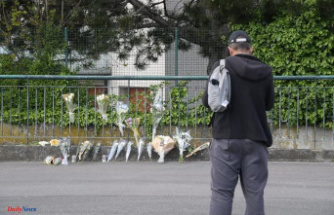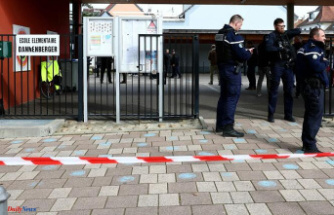It's easy to save energy within your own four walls. But you have little influence on some items - keyword common energy costs such as elevator, light and Co in apartment buildings. Is there still something going on here?
In addition to electricity and heating costs in their own homes, residents in apartment buildings also have to pay energy costs for shared facilities and rooms. This can quickly become expensive, especially in poorly insulated buildings with outdated heating technology. There is potential for savings here. The proportion of shared energy costs depends heavily on the condition of the building and the state of the art.
"In extreme cases, the joint energy costs can certainly make up 25 percent of the total operating costs," says Rolf Bosse, chairman of the tenants' association in Hamburg. This is particularly the case in new buildings with automatic ventilation, where the heating costs are low. "Regularly, the shares are between 8 and 12 percent."
Every machine and device that consumes energy in the dwelling creates a community energy cost. This includes, for example, the electricity for the elevator, the stair lighting or the ventilation systems in the house.
In order for house electricity to be apportionable as operating costs, it must be possible to clearly allocate the individual items to the Operating Costs Ordinance. For this reason, the electricity for the elevator and lighting must each be recorded on a separate meter.
"The distribution is usually based on the living space," says Rolf Bosse. The larger the apartment, the larger the tenant's share of the communal house electricity costs. However, other distribution keys can also be agreed if they are clearly regulated in the rental agreement.
Even in a homeowners association (WEG), the members can generally agree on their own rules for the allocation of these costs - for themselves and for their tenants. Tenants who move into an apartment that belongs to a residential community should find out in advance which distribution key applies to the house electricity.
In the case of house electricity, the so-called operating current makes up a significant part of the collective energy costs. This is primarily the electricity used by the heating system in the house, especially its pumps. "Older pumps consume far too much electricity - up to ten times more than modern, highly efficient models," says Alexander Steinfeldt from the non-profit consulting company co2online in Berlin.
It is therefore worth replacing old heating and hot water pumps and having the heating system hydraulically balanced. With hydraulic balancing, the different components of the heating system are optimally matched to each other. This can lead to significant cost savings.
Owners in WEG have the opportunity to bring about an appealing decision to modernize the heating system in the owners' meeting. Tenants can approach their landlords and suggest replacing the heating pump. "A high-efficiency pump is not a big investment. It costs around 3,000 euros, including installation and hydraulic balancing, and pays for itself in around three years," says Steinfeldt. The pump replacement is also subsidized by the Federal Office of Economics and Export Control (BAFA) with a subsidy of 20 percent.
The residents themselves have little scope to influence the consumption of electricity in the house and in the company. Sure, they could use fewer elevators or push for the use of energy-saving stairwell lighting.
For example, it is often possible to shorten the time that the light in the stairwell is on. But these savings are marginal. And you shouldn't save at the wrong end, advises Rolf Bosse. After all, there must be enough time for all residents to be able to move safely in the stairwell.












